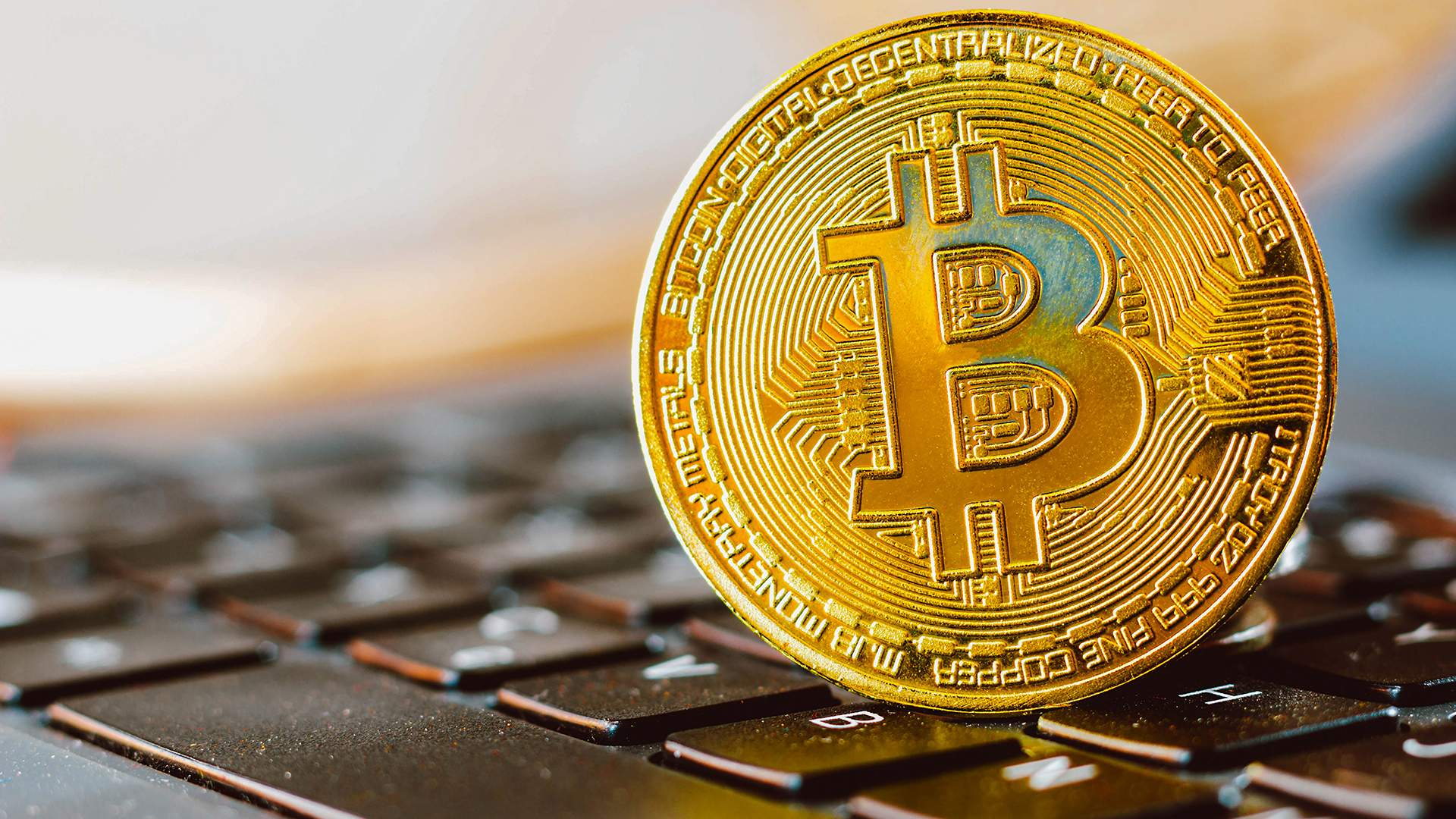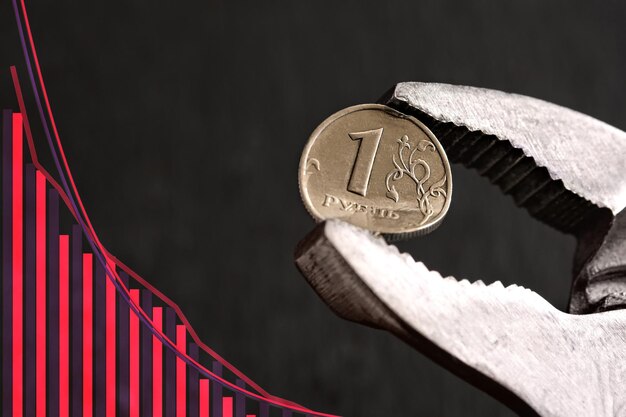Comparing USDC and USDT: Which is the Best Stablecoin for 2024
In today’s rapidly evolving digital landscape, individuals and businesses alike are seeking financial stability and security within the realm of cryptocurrencies. As traditional forms of money often fall prey to drastic market fluctuations, stablecoins have emerged as a promising alternative, providing a solid anchor amidst the volatile sea of digital assets. These stablecoins, each with its unique features and mechanisms, aim to provide stability and security while ensuring seamless usability and accessibility.
Unearthing the Gems of Stability
When it comes to stability, one cannot overlook the remarkable qualities of these prominent stablecoins. Through precise algorithms and rigorous market monitoring, these digital assets are designed to maintain a stable value, usually pegged to a prominent fiat currency, such as the US dollar or the Euro. This stability allows users to transact, invest, and store value without the nagging concern of substantial price fluctuations that plague other cryptocurrencies.
Embracing a Shield of Security
With increased awareness of cryptocurrency-related risks, security has become paramount in the minds of investors and users. Leading stablecoins prioritize the safeguarding of funds through stringent security measures like multi-factor authentication, advanced encryption protocols, and cold storage wallets. These layers of protection ensure that users can confidently engage with the stablecoin ecosystem, minimizing the potential for fraud, hacking, or unauthorized access.
The Quest for the Ideal Stablecoin
While each stablecoin offers stability and security to a certain degree, distinguishing the best among them requires an in-depth comparison of their underlying mechanisms and proven track records. Considerations such as transparency, regulatory compliance, issuer reputation, and adoption rates become crucial factors in determining the ideal stablecoin that meets your specific needs and requirements. Join us as we set sail on a journey to compare and contrast the leading stablecoins, evaluating their stability and security, to uncover the gem that provides the ultimate harmony between reliability and peace of mind.
Understanding Stablecoins: A Brief Overview
In this section, we will provide a concise overview of stablecoins, focusing on their purpose, characteristics, and significance in the world of digital currencies. Stablecoins play a crucial role in the cryptocurrency ecosystem, offering stability and security to users.
What are stablecoins?
Stablecoins are a type of digital currency designed to maintain a stable value, typically pegged to a specific asset, such as a fiat currency or a commodity. Unlike other cryptocurrencies, which are known for their volatility, stablecoins aim to provide a reliable and consistent value.
Key features and types of stablecoins
There are different types of stablecoins available, each with its unique approach to maintaining stability. Some stablecoins are backed by physical assets, such as gold or other commodities, while others are pegged to a basket of fiat currencies or operate using algorithms to ensure stability.
Asset-backed stablecoins: These stablecoins are backed by reserves of tangible assets, such as precious metals or real estate. The value of these stablecoins is directly linked to the value of the underlying assets, providing a sense of security to users.
Fiat-collateralized stablecoins: These stablecoins are backed by reserves of fiat currencies, such as the US dollar or the euro. The issuer holds a corresponding amount of fiat currency to back the stablecoin’s value, ensuring stability and redeemability.
Algorithmic stablecoins: These stablecoins utilize smart contracts and algorithms to maintain stability. They adjust the supply of stablecoins based on market demand, ensuring that the price remains relatively constant.
The significance of stablecoins
Stablecoins offer several advantages that make them a valuable addition to the cryptocurrency ecosystem. They provide a reliable store of value, making them suitable for everyday transactions and global remittances. Additionally, stablecoins can serve as a hedge against market volatility, allowing users to safeguard their assets during turbulent times.
In conclusion
Understanding stablecoins is essential for anyone interested in the world of cryptocurrencies. These digital currencies provide stability and security, making them an attractive option for individuals and businesses alike. By pegging their values to specific assets or implementing algorithms, stablecoins offer a reliable alternative in the volatile cryptocurrency market.
Examining Tether: The Dominant Force in the Stablecoin Market
In this section, we will delve into an in-depth analysis of Tether, the leading player in the stablecoin market. Tether has emerged as a dominant force, offering users stability and security in the realm of digital currencies. We will examine the key features and intricacies of Tether, highlighting its significance and impact on the stablecoin ecosystem.
Tether, often regarded as the leader among stablecoins, has established itself as a prominent name in the cryptocurrency market. Its primary aim is to provide stability, acting as a bridge between traditional fiat currencies and the volatile world of cryptocurrencies. With Tether, users can trade and transact with digital assets while having the assurance of a stable value equivalent to the respective fiat currency it is backed by.
One of the key elements that sets Tether apart is its stablecoin pegging mechanism. Tether tokens are typically backed by reserve assets, such as traditional currencies or other stable assets, ensuring their stability. This pegging mechanism helps maintain a stable value and guards against the price fluctuations commonly associated with other cryptocurrencies.
Moreover, Tether offers users a high level of security. Through its transparency initiatives, Tether provides access to regular audits and reports of its reserves, which enhances trust and confidence among users. This commitment to transparency and accountability has positioned Tether as a reliable stablecoin option.
With its extensive adoption across multiple cryptocurrency exchanges and popularity among traders, Tether has established itself as the dominant force in the stablecoin market. Its stability, security, and widespread usage make it an essential component of the cryptocurrency ecosystem, providing users with a reliable and secure means of value transfer and preservation.
In conclusion, Tether’s dominance in the stablecoin market is a result of its strong focus on stability and security. By providing a stable value and ensuring transparency through regular audits, Tether has gained the trust and support of users and traders worldwide. As the leading stablecoin, Tether continues to play a vital role in the ever-evolving landscape of digital currencies.
Digging Deeper into USD Coin: Backed by Trustworthy Fiat Currency Reserves
Exploring the inner workings of USD Coin goes beyond a simple comparison of stablecoins. This section delves into the foundation of USD Coin, highlighting its stability and security, which are rooted in the trustworthy reserves of fiat currency.
USD Coin stands out among stablecoins due to its reliable backing by fiat currency reserves. Unlike some other stablecoins that rely on complex mechanisms or opaque collateral, USD Coin ensures stability and security by maintaining a direct link to trusted fiat currency reserves.
By being backed by trustworthy fiat currency reserves, USD Coin offers a high level of stability. Its value is directly tied to the value of the US dollar, providing confidence to users that its price will remain steady over time. This stability makes USD Coin an attractive option for those seeking a reliable store of value or a medium of exchange.
Moreover, having fiat currency reserves as its foundation enhances the security of USD Coin. The use of fiat currency reserves ensures that the stablecoin is not subject to the volatility of other assets or markets. This stability reduces the risk of sudden value fluctuations, making USD Coin a dependable choice for individuals and businesses alike.
Furthermore, the transparency and accountability that come with being backed by trustworthy fiat currency reserves contribute to the overall trustworthiness of USD Coin. Users can have confidence in this stablecoin’s value and legitimacy, as its reserves can be audited and verified.
Overall, the presence of trustworthy fiat currency reserves as the backbone of USD Coin helps solidify its position as a stable and secure digital currency. Its connection to these reserves ensures stability, security, and trust, making USD Coin an appealing choice for those seeking a reliable and secure stablecoin.
Exploring DAI: An Algorithmic Stablecoin with a Unique Approach to Stability
In this section, we delve into the fascinating world of DAI, an algorithmic stablecoin that takes a distinct approach to ensure stability. Unlike traditional stablecoins, DAI employs a unique algorithmic mechanism to maintain its peg to a target value, offering stability and security to its users.
DAI sets itself apart from other stablecoins by utilizing an innovative decentralized finance (DeFi) protocol. This protocol employs smart contracts to create and manage DAI tokens, making it resistant to censorship and providing users with the assurance of transparency and reliability.
One of the key features of DAI is its autonomous nature. Instead of relying on centralized entities or collateralized assets, DAI’s stability is maintained through an algorithmic system known as the Maker Protocol. This protocol monitors supply and demand dynamics and adjusts the supply of DAI accordingly to ensure its value remains stable.
By exploring the intricacies of DAI’s algorithmic stability mechanism, we can gain a deeper understanding of its unique approach. The Maker Protocol, which underpins DAI, employs advanced risk management strategies to mitigate potential volatility risks and maintain stability.
Furthermore, DAI’s decentralized nature enhances its security. By operating on a blockchain, transactions involving DAI are recorded transparently and immutably, reducing the risk of fraud and manipulation. This inherent security feature makes DAI an attractive option for individuals and businesses seeking a stablecoin that prioritizes stability and security.
In conclusion, DAI stands out among stablecoins due to its algorithmic stability mechanism and decentralized structure. By embracing innovative technology and leveraging smart contracts, DAI provides users with stability and security in a trustless manner. Exploring the intricacies of DAI allows us to appreciate its unique approach to stability and its potential to revolutionize the stablecoin landscape.
Analyzing TrueUSD: A Regulated Stablecoin with Enhanced Security Measures
This section focuses on the in-depth analysis of TrueUSD, a stablecoin that distinguishes itself in the market due to its regulatory compliance and advanced security measures.
TrueUSD stands out amongst stablecoins due to its commitment to regulatory compliance. Complying with financial regulations is crucial for stablecoins as it ensures the stability and legality of their operations. Through its partnerships with established banks and regulated financial institutions, TrueUSD is able to provide users with a stablecoin that adheres to the highest regulatory standards, helping to establish trust and reliability.
In addition to regulatory compliance, TrueUSD implements enhanced security measures to safeguard its users’ assets. One of the key features is the use of third-party escrow accounts, where user funds are held in reserve by trusted financial institutions. This ensures that each TrueUSD token is fully backed by an equivalent amount of dollars held in reserve, providing users with confidence in the stability of the stablecoin.
Moreover, TrueUSD incorporates rigorous security protocols to protect against potential vulnerabilities. These include using multi-signature wallets for fund management and conducting regular audits to verify the token’s collateralization. By employing such measures, TrueUSD aims to minimize the risk of hacking or fraudulent activities, enhancing the overall security of the stablecoin.
Furthermore, TrueUSD offers transparency to its users by providing real-time attestation reports, which detail the reserves held in escrow accounts. This allows users to independently verify the stablecoin’s backing and ensure its stability. By being transparent about its operations, TrueUSD aims to foster a sense of trust and confidence in its user base.
- Regulatory compliance and partnerships with established financial institutions.
- Use of third-party escrow accounts to fully back each TrueUSD token with an equivalent amount of dollars.
- Implementing enhanced security measures, such as multi-signature wallets and regular audits.
- Providing real-time attestation reports for transparency and user verification.
Overall, TrueUSD sets itself apart as a regulated stablecoin by prioritizing compliance and security. Its commitment to regulatory standards, advanced security measures, and transparent operations makes it a reliable choice for users seeking stability and security in the world of stablecoins.
Comparing Stability and Security: Choosing the Best Stablecoin for Your Needs
When it comes to stablecoins, stability and security play crucial roles in determining which one is the most suitable for your needs. In this section, we will explore the importance of stability and security in the stablecoin market and examine the key factors to consider when choosing the best stablecoin.
Understanding Stability
Stability is a fundamental characteristic of stablecoins that ensures their value remains relatively constant over time. It eliminates the volatility typically associated with cryptocurrencies, making stablecoins an attractive option for those seeking a more reliable and predictable digital asset.
When comparing stablecoins, it’s important to assess the mechanisms used to maintain stability. Some stablecoins may be backed by traditional fiat currencies like the US Dollar or the Euro, while others rely on collateralized assets such as cryptocurrencies or precious metals. The choice of underlying assets can significantly impact the stability of a stablecoin and should be considered when making a decision.
Ensuring Security
Security is another critical factor to evaluate when selecting a stablecoin. As custodians of value, stablecoins must offer robust security measures to protect users’ funds from potential threats, such as hacking, fraud, or mismanagement.
The security features of stablecoins vary depending on the technology used and the platform or protocol governing them. It’s essential to examine the security practices, such as encryption standards, multi-factor authentication, and cold storage solutions, implemented by the stablecoin issuer to safeguard your investment.
| Stablecoin | Stability | Security |
|---|---|---|
| Stablecoin A | High | Excellent |
| Stablecoin B | Moderate | Good |
| Stablecoin C | Low | Average |
In addition to stability and security, other factors like transparency, regulatory compliance, and user adoption should also be taken into account to make an informed decision. By carefully evaluating the stability and security features of different stablecoins, you can choose the one that aligns with your specific requirements and risk tolerance.
Questions and answers: Best stablecoins comparison
What are stablecoins?
Stablecoins are cryptocurrencies designed to have price stability by being pegged to a reserve asset, such as a fiat currency or a commodity. They aim to minimize the price volatility that is often associated with other cryptocurrencies like Bitcoin or Ethereum.
What factors should I consider when comparing stablecoins?
When comparing stablecoins, it is important to consider factors such as the stability mechanism, security measures, transparency of reserves, regulatory compliance, and the track record of the issuing company.
Which stablecoin offers the highest level of security?
While security measures can vary among stablecoins, several stablecoins prioritize security by conducting regular audits, implementing robust security protocols, and maintaining transparency. Examples of stablecoins known for their high level of security include Tether (USDT), USD Coin (USDC), and Dai (DAI).
Can stablecoins be trusted for long-term stability?
Stablecoins are designed to provide stability, but their long-term stability can depend on various factors, such as the underlying reserves and the governance framework. Stablecoins that are backed by reputable and regulated entities with transparent and audited reserves are generally considered more trustworthy for long-term stability.
What is the significance of “crypto” in the context of digital finance?
Cryptocurrency, often referred to as “crypto,” represents a digital or virtual form of currency secured by cryptography, providing decentralized and transparent financial transactions.
How is “market capitalization” calculated in the crypto space?
Market capitalization in the crypto space is calculated by multiplying the current price of a cryptocurrency by its total circulating supply, providing an estimate of its total value in the market.
Which cryptocurrency exchange is known for its global presence and diverse trading options?
Binance is widely recognized as one of the largest cryptocurrency exchanges, offering a wide range of trading pairs and services to users worldwide.
What is “BUSD,” and how does it function in the crypto ecosystem?
BUSD, short for Binance USD, is a stablecoin pegged to the value of the US dollar (1:1 ratio), providing users with a digital asset that maintains stability amidst market volatility.
How can users “deposit” funds into their crypto accounts?
Users can deposit funds into their crypto accounts by transferring cryptocurrencies or fiat currency from external sources, such as bank accounts or other crypto wallets.
Which prominent platform offers a user-friendly interface for buying, selling, and storing cryptocurrencies?
Coinbase is a leading cryptocurrency exchange platform known for its user-friendly interface and a wide range of supported digital assets, catering to both novice and experienced traders.
What role does “Paxos” play in the crypto space?
Paxos is known for issuing PAX, one of the largest stablecoins by market capitalization, offering stability and reliability for users seeking to transact in digital assets.
What distinguishes the “largest stablecoin” in terms of its market cap and usage?
The largest stablecoin, such as USDT or USDC, boasts a significant market capitalization and is widely utilized for trading, remittances, and other financial transactions within the crypto ecosystem.
How does the “Ethereum blockchain” facilitate various financial services in the crypto realm?
The Ethereum blockchain serves as the foundation for decentralized finance (DeFi) applications, enabling smart contracts, tokenization, lending, and other innovative financial services.
When was “Binance” launched, and what significance does it hold in the crypto industry?
Binance was launched in 2018 and quickly emerged as one of the most prominent cryptocurrency exchanges globally, offering a diverse range of trading options and services to users worldwide.
What distinguishes USDT and USDC in the realm of stablecoins?
USDT and USDC are both popular stablecoins, but they differ in their issuing entities and regulatory compliance.
How are stablecoin interest rates determined in the crypto market?
Stablecoin interest rates are influenced by factors such as market demand, lending supply, and the underlying protocols of lending platforms.
Which stablecoin is considered one of the most widely used and trusted in the crypto market?
USDC, issued by regulated financial institutions and backed by reserves, is recognized as one of the most popular and trusted stablecoins.
What role does the New York State Department of Financial Services play in regulating stablecoins?
The New York State Department of Financial Services regulates stablecoins operating within its jurisdiction, ensuring compliance with financial laws and consumer protection standards.
How are stablecoins typically pegged to the US dollar?
Stablecoins are often pegged to the US dollar by maintaining a 1:1 ratio, where each stablecoin unit is backed by a corresponding US dollar reserve.
What is the significance of the Centre Consortium in the realm of stablecoins?
The Centre Consortium, founded by Circle and Coinbase, aims to establish industry standards for stablecoin issuers and promote the adoption of stablecoin technology.
What distinguishes decentralized stablecoins from other types of stablecoins?
Decentralized stablecoins operate without a central authority, relying on blockchain technology and smart contracts to maintain stability and transparency.
How do stablecoins backed by fiat currency differ from crypto-backed stablecoins?
Fiat-backed stablecoins are directly backed by reserves of fiat currency, such as US dollars, while crypto-backed stablecoins are collateralized by other cryptocurrencies.
Why are stablecoins considered essential for various use cases within the crypto ecosystem?
Stablecoins offer a reliable means of transacting value within the crypto market, facilitating trading, remittances, and decentralized finance (DeFi) applications.
Which stablecoin holds the title of being the largest by market capitalization?
USDT, also known as Tether, currently holds the title of the largest stablecoin by market capitalization, playing a significant role in crypto trading and liquidity.








No responses yet